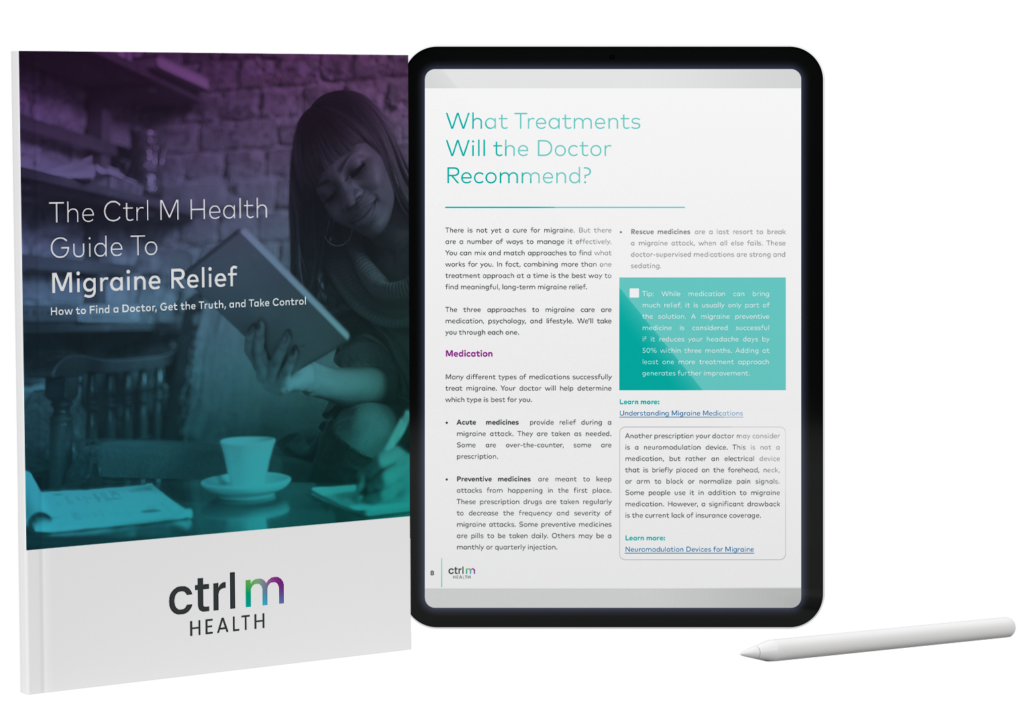Pain is an alarm to the nervous system, but it’s not always cause for concern. When it comes to headache, even though it might feel like a hammer to the head, the reason for pain is usually neurologic. Sometimes, however, it’s a warning that something ominous is happening. Making the distinction quickly is critically important. How to tell if your migraine is serious? Here are some of the things doctors look for.
First, Worst, 51st or Cursed
Our first step is to take a careful history, looking for “red flags” that indicate we may need to dig a little deeper. An aid some use is “First, Worst, 51st or Cursed.”
First – If someone is experiencing a headache of a certain kind for the very first time, it could be reason for concern. Since lots of people experience headache, most first headache attacks are not much to worry about, but it’s wise to take a little extra care.
Worst – A dreaded phrase is “the worst headache of my life.” But much like first headaches, everyone has a “worst” one at some point, and most of the time, it turns out to be more agonizing than alarming. Still, we take caution.
51st – It’s unusual for someone over the age of about 50 to begin having benign headache, so this is another situation when the approach must be detailed.
Cursed – Headache accompanied by unexpected symptoms — or “curses,” to borrow a medieval term — could also be a reason for alarm.
More Clues: 2SNOOP4
If we get a “yes” on any of the above, it’s time for a little more detective work. We have yet another aid for this phase of snooping: If you remember 2SNOOP4, you probably won’t miss something ominous. It starts with two words that begin with the letter “S”:
S – The first “S” stands for “systemic,” meaning clues that something more widespread is wrong in the body. Indicators include fever, generalized weakness, weight loss, rash and shortness of breath.
S – The second “S” stands for “secondary risk,” meaning we know that person already has a condition that makes them susceptible to potentially dangerous entities with headache as a symptom. For example, someone with a history of cancer has an increased chance of a brain tumor, and someone with a suppressed immune system has an increased chance of a brain infection.
N – The “N” stands for “neurologic deficit.” While headache is neurologic in nature, there are certain neurologic symptoms that are not expected, including altered consciousness, seizures, paralysis, erratic behavior/speech, and incoordination, especially if it lasts for over an hour. Not every neurologic deficit is ominous, however. For example, migraine aura can include temporary loss of vision, and with cluster headache, it’s common to have a droopy eye with uneven pupils.
O – The first “O” stands for “older,” as in over about age 50. We worry most about stroke from blocked or inflamed blood vessels, but other possibilities exist.
O – The second “O” stands for “onset,” particularly sudden, split-second, or so-called thunderclap, “like a blow to the head.” We worry about an acute catastrophe such as bleeding in the brain, a surging infection, damage to or stretching of blood vessels with weakened walls, or sudden changes in pressure inside the head.
P – The first “P” stands for “past history” or “pattern.” Headache disease can change over time, but an abrupt shift in pattern may mean something else needs attention.
P – The second “P” stands for “positional.” Headache that occurs with a certain position of the body, head, or neck could mean an issue with cerebrospinal fluid, the spine itself, or how the nervous system reacts to position changes.
P – The third P stands for “precipitants.” This means seeing if headaches are immediately preceded by actions like exertion, bending, coughing, or straining. When these are consistent triggers, we need to look for crowding of structures at the back of the brain or a spinal fluid problem.
P – The fourth “P” stands for “papilledema,” or swelling visible inside the eyeball, which usually indicates increased pressure in the head.
Some also add a fifth “P” for “pregnancy,” a scenario that generally requires greater vigilance and care, not only for the patient but also her baby. There are certain emergencies that can happen in the later stages of pregnancy and shortly thereafter that cannot be ignored, such as preeclampsia and blood clots.
It’s wise to keep in mind that in the overwhelming majority of cases, headache winds up being diagnosed as the primary condition. Dangerous secondary conditions are more rare, making it all the more important that we stay attentive for that slim minority of cases that warrant closer scrutiny.
The Care Tuner Guide to Migraine Relief
Untreated migraine tends to worsen over time, so if you suspect you have migraine, it’s important to get help. We’ve compiled everything you need, including what to expect, pitfalls to avoid, and what you can do right now to get relief.






